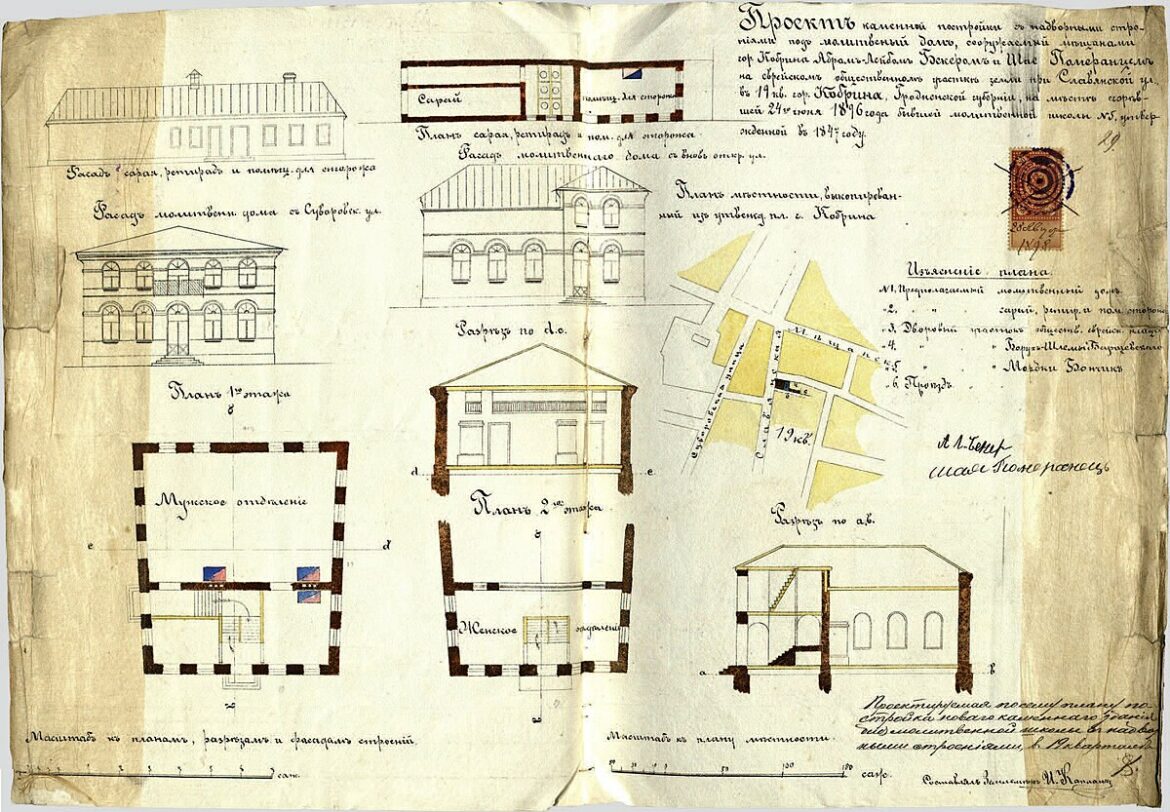Jewish settlement in the eastern lands of the Polish-Lithuanian Commonwealth began in the second half of the 14th century with the increased colonisation campaign conducted in Ruthenia by Casimir the Great. In the 14th-16th centuries, larger Jewish population centres were already located in Volhynia, Podolia and Lithuania. In the landscape of present-day Ukraine, Belarus and Lithuania, there are still to this day distinctive remnants of the former Jewish inhabitants – synagogues, displaying a wealth of different styles and artistic influences.
A significant proportion of the Borderland Jews lived in the countryside, traditionally occupied with leasing inns, mills, and sometimes landed estates. Religious life was concentrated in communities (kahals), at which there were houses of prayer – synagogues. In larger towns, they were usually brick buildings, referring in scale and architecture to the middle-class buildings, sometimes to court or sacral architecture. Brick synagogues had outstanding architectural qualities in, among others, Lwów (today’s Lviv) – Golden Rose synagogue, (1582), Slonim (1642) and in Zhovkva, Pinsk, Novopol (17th century). Smaller communities usually built wooden and more modest synagogues. They usually had only a prayer room for men, housing a cupboard with Old Testament scrolls (aron ha-kodesh) on the eastern wall, a rostrum (bima), a vestibule, and less often a separate room for women. The wooden synagogues represented a great variety of styles as well as structural and decorative solutions. Original blocks topped with domes, interiors with apparent vaults and rich painting decoration were present in synagogues in Khodorov (1640-50), Janov near Trembowla (17th century), Podhrebyszcz (1690), Volpa (18th century).
From the end of the 17th century, there was a decline in Jewish sacred architecture in the eastern lands of the Polish-Lithuanian Commonwealth, caused both by Cossack pogroms, persecution and repression by the partitioning states, and by new religious movements, including Hasidism, which influenced the simplification of architectural forms, or the movement of progressive Jews (Haskalah, 2nd half of the 19th century), which favoured the construction of progressive synagogues that combined oriental motifs with interiors shaped under the influence of Protestant solutions.





